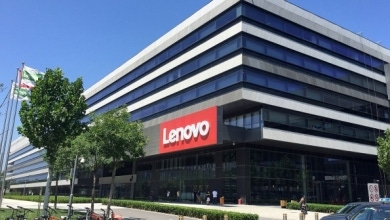Top-Ranked Analyst Says Lenovo Could Fall Another 27 Percent
Shares in China’s biggest PC maker fell for a third straight day in Hong Kong trading after the company reported a surprise net loss Friday.
September 21, 2017

By Bloomberg
Lenovo Group Ltd., which breathed new life into IBM’s personal-computer business, bet that it could do the same with mobile phones and data centers. Now, it’s beginning to look like that gamble is dragging the Chinese manufacturer in the wrong direction.
Shares in China’s biggest PC maker fell for a third straight day in Hong Kong trading after the company reported a surprise net loss Friday. Analysts cut their price targets for the stock, with Macquarie Securities downgrading its rating to hold from a buy.
Lenovo Chief Executive Officer Yang Yuanqing likes to describe the smartphone and server segments, along with new online endeavors as “rice in the field,” not yet ready to be harvested. Yet the two units are struggling and posted losses in the latest quarter, calling into question the strategy of whether any fresh growth can be extracted from markets that are rapidly becoming commoditized. Lenovo’s best bet is to invent new products and services, but that traditionally hasn’t been the company’s strong point, according to Qian Kai, analyst at China International Capital Co.
“Innovation is not in Lenovo’s DNA,” said Qian, the top-ranked analyst in Bloomberg’s Absolute Return Rankings of the 30 analysts who cover Lenovo. His price target for Lenovo is HK$3.20, or 27 percent below Monday’s close. “It’s more of a trading company than a innovator.”
Lenovo shares retreated as much as 3.6 percent Tuesday, to the lowest point since 2011, according to data compiled by Bloomberg.
Lenovo is facing stiff competition from rivals that are competing on price — from Xiaomi and Oppo in mobile devices, to Quanta Computer Inc. and Wistron Corp. in the server market. Even with PCs, Lenovo lost its spot as the world’s biggest manufacturer, replaced by HP Inc., while total PC sales shrink.
Representatives from Lenovo didn’t respond to a request for comment.
One of Lenovo’s biggest challenges is the smartphone business, which expanded when it bought the Motorola brand in 2014 for $2.8 billion. In China, Lenovo is betting that the Motorola brand, as well as phones with modular designs, will help revive the mobile unit, even though its Chinese rivals have already gained a strong foothold there.
Lenovo’s best prospect for fresh smartphone sales is India, where other phone makers are also seeking a chunk of a market that saw 109.1 million smartphone shipments in 2016, according to IDC. Lenovo is the fifth-largest seller of smartphones in the country, after shipments declined by 25 percent in the latest quarter from the prior period. More broadly, as competition heats up heading into the year-end holiday shopping season, Lenovo will struggle to compete against newer phone models, according to Chris Yim, analyst at Bocom Group.
“We expect smartphone competition to intensify at the high end during this year’s peak season, with the likely launch of multiple iPhone models, and key refreshes such as the Samsung Note series and Huawei Mate series,” Yim wrote in a report.
Lenovo’s Talk of Momentum Is Too Funny to Take Seriously: Gadfly
In the data-center business, which is based on the x86 server unit Lenovo acquired from IBM in 2015 for $2.1 billion, the market for advanced servers is shrinking. Cloud-computing companies such as Alibaba Group Holding Ltd., Alphabet Inc. and Amazon.com Inc.’s web-services unit are ordering tailored equipment from contract makers, bypassing traditional server manufacturers. Sales in Lenovo’s data center group fell 11 percent in the quarter ended June.
Given that PCs make up 70 percent of Lenovo’s sales, Yang is also looking for ways to rejuvenate that business, including a potential tie-up with Fujitsu Ltd. that he said last month is still under negotiation.
Another possibility is for Lenovo to get into contract manufacturing, using its factories and assembly lines to make products for other companies as an original equipment manufacturer.
“They do have advantages in manufacturing and supply chain management, maybe they should just do OEM so they can make a little more money,” Qian said. “Although it sounds like a step back and Lenovo most likely will not do that.”
Lenovo has also reenlisted former mobile-unit head Liu Jun to oversee its Chinese business and has joined with e-commerce site JD.com in a bid to push its annual online revenue to 80 billion yuan ($12 billion) within three years.
Ray Kwok, analyst at CIMB Securities HK Ltd., predicts that the mobile unit will take six months longer to turn around than Lenovo’s goal of the second half of the current fiscal year, which ends in March.
“It’s hard for Lenovo to keep sustainable shipments due to growing competition,” Kwok said. “It is facing a strong challenge from Oppo, Huawei and Vivo in developing markets because those brands have already set up sales networks, invested heavily in marketing partners and hired local celebrities to endorse their devices.”
You May Also Like
